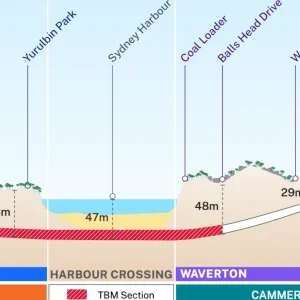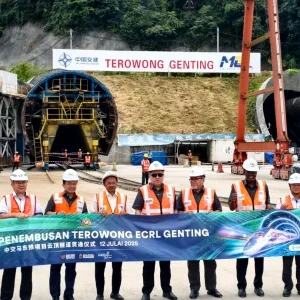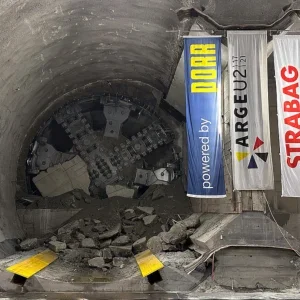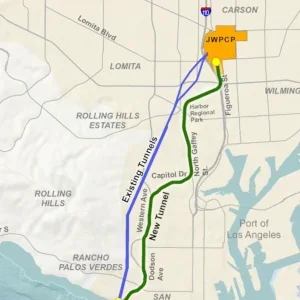This month will see the start of construction of 11km of twin-tube tunnel on the Kazan Metro in eastern Russia. Contractor Kazmetrostroi, a municipal enterprise, will excavate the tunnels using a Lovat 5.6m diameter TBM, which was delivered to site in October 1999.
The TBM being assembled in the starter shaft as T&T International went to press is equipped with a soft ground cutterhead and is capable of open and EPB excavation modes. It has been designed to cope with the predicted geological conditions of silt, loam, clay and sand at a maximum depth to invert of 28m. Maximum water pressure of up to 1.9 bar is expected.
Lining will consist of seven plus one precast concrete segments, erected by the machine. After lining, the tunnels will have an i.d. of 5.1m, with each ring 1m long.
Spoil will be transported from the face via a primary belt conveyor in favourable ground conditions and by a 10.5m long screw conveyor when in EPB mode where positive face support is required.
The twin tunnels will be driven under densely populated areas of the city and settlement will not be permitted to exceed 10mm, as stipulated by the client, the Department of Metro Construction of the Administration of the City of Kazan.
The project is half financed by the Tatarstan Republic budget and half from the Russian Federation budget. This first section of the planned metro is scheduled to open by 2005, the 1000 year anniversary of Kazan.







